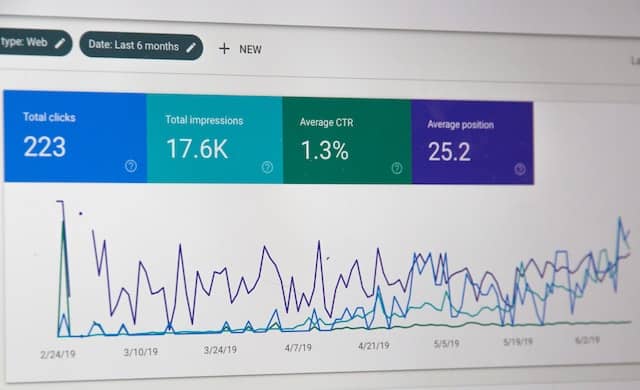The world of e-commerce is constantly evolving, and dropshipping has become a popular way for entrepreneurs to start their own online businesses.
While dropshipping can be an effective and accessible business model, it also has its challenges. You may have encountered issues like high competition, low profit margins, and unreliable suppliers.
In this article, we’ll explore a comprehensive list of dropshipping alternatives to help you diversify your e-commerce business.
These alternative methods can provide new and exciting opportunities to create a sustainable and profitable online business.
Whether you’re an experienced online seller or just starting, it’s essential to be aware of the various options available to you.
Key Takeaways
- Exploring alternative business models can help diversify your e-commerce business.
- There are various options, such as affiliate marketing, drop servicing, and print on demand.
- Combining different methods may offer an optimal approach in expanding your online business.

The Limitations of Dropshipping
Product Quality Control
When you opt for dropshipping, you rely on your supplier for product quality. This means you don’t have direct control over the quality of your products, so maintaining consistency can be difficult.
Shipping Times
Longer shipping times are expected in dropshipping since you’re not handling the fulfillment process directly. Customers may not be happy with waiting for their orders to arrive, which can affect your reputation and customer satisfaction.
Profit Margin
With dropshipping, your profit margin is generally lower than if you were to manage inventory and fulfillment yourself. Most of the margin goes to the supplier, so generating significant income may require selling more products.

Risk
Dropshipping does have its risks, including potential supply chain issues or supplier errors. You might face challenges maintaining a reliable supplier network for your customers.
Competition
The dropshipping market can be highly competitive, with many other businesses selling similar products. This may require extra effort to differentiate your brand and attract customers.
Returns
Handling returns can be more complicated with dropshipping. Since you’re not in direct control of inventory, coordinating returns might take a lot of time and effort.
A List of Dropshipping Alternatives
Option 1: Affiliate Marketing
Affiliate marketing is a popular way to generate passive income online. It involves becoming a part of an affiliate program and promoting products or services from third parties.
In this business model, you don’t have to worry about managing inventory or shipping; your focus is on driving sales through your unique affiliate links.
As an affiliate marketer, you earn a commission each time someone purchases through your affiliate link.
This means your income is directly tied to your marketing efforts and the quality of the products you promote. Unlike dropshipping, you don’t need to set up an online store, making it easier for beginners to make money online.

One of the advantages of affiliate marketing is the potential to earn passive income. Once you have your affiliate links set up, you can continue earning from the sales generated by your marketing efforts even when you’re not actively promoting the products.
To get started with affiliate marketing, you’ll need to find a niche that suits your interests and market demand. Next, you’ll want to partner with reputable affiliate programs that offer high-quality products.
It’s essential to choose products you believe in, as your reputation is on the line when recommending them to your audience.
Option 2: Drop Servicing
Drop servicing is a great alternative to dropshipping that you can consider for your online business. In this model, you act as a middleman between clients who need specific services and professionals who can fulfill those services.
Your job is to sell the service to clients, and then outsource the work to freelancers or contractors who will complete the project. This way, you can generate income without providing the service yourself.
To get started with drop servicing, you’ll need to choose a niche that interests you and is in demand. Some popular options include graphic design, writing, and even software development.
Once you’ve chosen your niche, you’ll need to find reliable and skilled service providers who can support your clients’ needs and ensure they’re on board with your business model.
Next, focus on building a strong brand that showcases the value of your services and makes it appealing for potential clients to work with you. Design an attractive website and create social media accounts to further promote your brand online.

Marketing plays a crucial role in attracting clients to your drop servicing business.
Use various digital marketing techniques such as search engine optimization (SEO), social media marketing, and email campaigns to reach potential clients searching for your services.
As you gain more clients and expand your business, make sure to continuously provide excellent customer service. This will help to retain existing clients and attract new ones through positive word-of-mouth.
Option 3: Print on Demand
Print on demand (POD) is an excellent alternative to dropshipping. It allows you to sell custom-designed products, such as t-shirts and mugs, without holding any inventory.
This business model is attractive because you only create the product when a customer orders it, minimizing your risk and upfront costs.

With POD, you can showcase your creativity by offering personalized products to your customers. Designing custom apparel and merchandise enables you to stand out from the competition and cater to your target audience’s preferences.
Digital printing technology has made it easier than ever to create and fulfill orders for custom products. When a customer places an order, your POD partner prints the design on the chosen product and ships it to the customer.
Option 4: Private and White Labeling
If you’re looking to build a unique brand with customized products, private and white labeling can be a great option for your e-commerce business.
Private labeling involves creating a product exclusively for your brand, allowing you to have control over the design, ingredients, or components.
This approach enables you to offer a genuinely unique product catered to your target market’s preferences.

On the other hand, white labeling involves selling a pre-made product under your brand name, making it seem like you are the manufacturer.
Typically, white-labeled products are available to multiple retailers, but the brand name and packaging are customized for each reseller.
Your branding efforts can extend even further with custom packaging for your dropshipping products. Utilizing custom packaging can help increase customer satisfaction and promote brand recognition.
Unique packaging not only makes your products stand out but also creates a memorable unboxing experience for your customers.
When considering white label vs. private label products for your business, it’s essential to evaluate the pros and cons of each approach.
Private labeling allows you to create more unique products, resulting in higher profit margins and better brand awareness. However, it may require a more significant upfront investment in product development and manufacturing.
Conversely, white labeling requires less upfront work and investment but may lack the differentiation and exclusivity of private-labeled products.
Option 5: Traditional Retail
If you’re exploring dropshipping alternatives, consider the tried-and-tested model of traditional retail.
In this option, you manage your inventory and sell products directly to consumers. This can be done through physical shops, local markets, or even niche online marketplaces.

Traditional retail gives you the advantage of complete control over your inventory and direct interactions with your customers. This hands-on approach allows you to build a strong relationship with your clientele.
Additionally, you can explore regional markets and specific niches that might not be available in global dropshipping markets.
By focusing on specific regions or niches, you can cater your products and services to fit the demands and needs of your target audience.
For example, if you sell handmade crafts, you could set up a shop at local markets or join an online platform focusing on artisan goods.
While traditional retail requires more initial investment and operational costs compared to dropshipping, it can lead to a more sustainable and profitable business in the long run.
This is especially true if you succeed in securing a loyal customer base that appreciates your personalized touch.
Option 6: Custom eCommerce Store
A custom eCommerce store is another great alternative to dropshipping platforms like Shopify, Wix, and BigCommerce.
By creating a custom online store, you can take control of your eCommerce business and tailor it to your specific needs and preferences.
In contrast to using pre-built platforms, a custom eCommerce store allows you to design a unique customer experience. You can customize the layout, navigation, and aesthetics, helping you stand out from your competition.
Additionally, a custom store gives you more freedom when choosing the features and functionalities best suited for your business.

Building a custom store might require more time and effort compared to using a platform like Shopify or Wix. However, the benefits can be substantial, as you have more control over every aspect of your online business.
This could lead to a more personalized and engaging shopping experience for your customers, which typically translates into higher conversion rates and customer loyalty.
Frequently Asked Questions
Why Does Dropshipping Fail?
Dropshipping may fail for a variety of reasons, often due to poor planning and execution.
Common issues include choosing the wrong niche, not researching competition, and neglecting customer service.
Additionally, many dropshippers face challenges with product quality, supplier reliability, and pricing strategies.
To improve your chances of success, it’s essential to research and plan carefully before starting your dropshipping business.
Is Dropshipping Good for Beginners?
Yes, dropshipping can be a viable option for beginners looking to start an online business.
With low upfront costs and no need to manage inventory, dropshipping allows you to test different products and niches without a significant investment.
However, it’s essential to research suppliers, understand your target market, and stay dedicated to providing excellent customer service. Additionally, investing time in learning marketing and sales strategies will help you grow your business.
What Is Reverse Dropshipping?
Reverse dropshipping refers to the process of purchasing products from retailers at a lower price and reselling them at a higher price through your online store.
This practice differs from traditional dropshipping, where you source products from wholesale suppliers.
Reverse dropshipping can offer some benefits, such as wider product selection and easy sourcing. However, it may be challenging to find sustainable profit margins due to the need to buy from retailers.
What Is More Profitable than Dropshipping?
Depending on your goals and expertise, several business models can be more profitable than dropshipping.
Affiliate marketing, for example, involves promoting products and earning a commission on sales made through your referral links, potentially providing higher margins without managing inventory.
Other alternatives include white labeling, private labeling, and print on demand, which offer more control over your brand and product quality.
What Are Some Budget-Friendly Shopify Alternatives?
If you’re seeking budget-friendly alternatives to Shopify for your dropshipping store, consider platforms such as WooCommerce, Wix, or BigCommerce.
WooCommerce is a popular, free WordPress plugin that offers extensive customization options and a large selection of themes and plugins.
Similarly, Wix and BigCommerce provide affordable pricing models, multiple features, and user-friendly interfaces to help you build and manage your online store.
Exploring Dropshipping Alternatives: A Recap
In the world of e-commerce, success comes with finding the right strategy for your online business.
One of the most popular approaches is dropshipping, but it’s essential to explore other alternatives that might yield better results for your specific needs.
As an online retailer, you have various alternatives to choose from, such as affiliate marketing, wholesale retailing, and print-on-demand services, to name a few.
By experimenting with these e-commerce strategies, you may discover new opportunities for business growth and profitability.
Always remember to choose the alternatives that align with your business goals, target audience, and marketing plan. It’s crucial to find a balance between offering competitive prices, reliable shipping services, and top-notch customer support.
If you’re interested in sourcing and dropshipping your products from China, consider requesting a free quote from us at NicheDropshipping.
By outsourcing your product sourcing, you may find higher quality options at competitive prices, ultimately leading to increased customer satisfaction and more profit for your online business.

